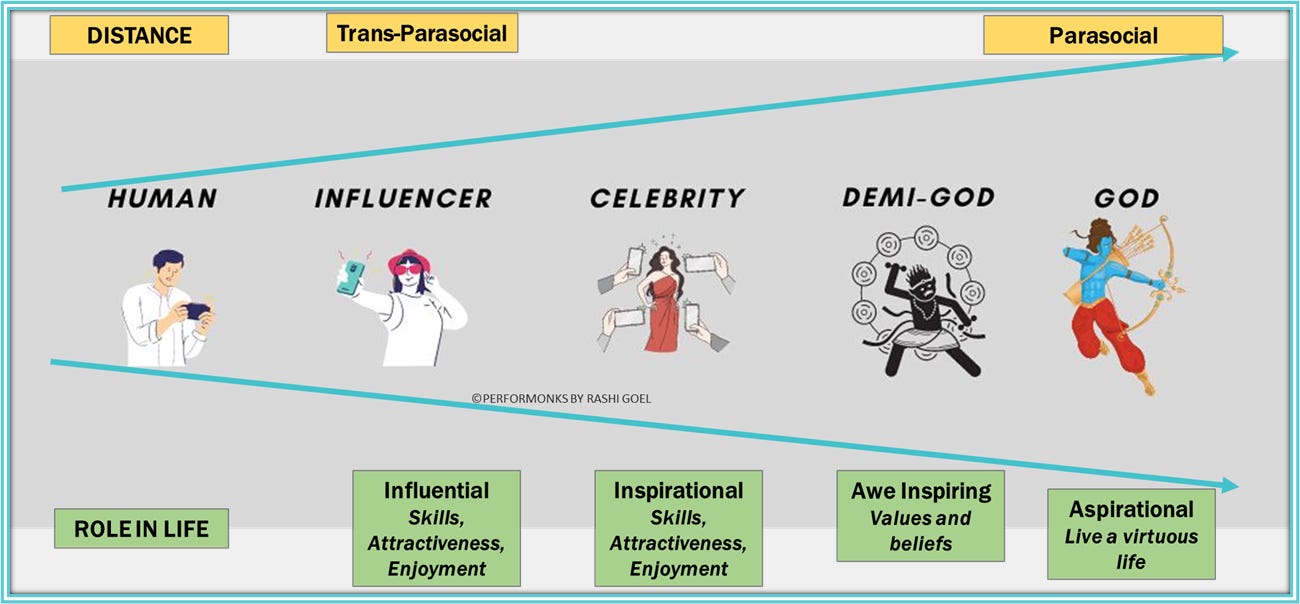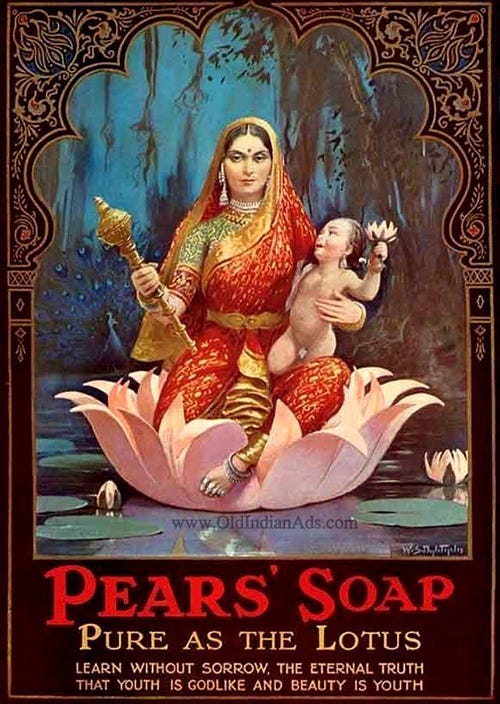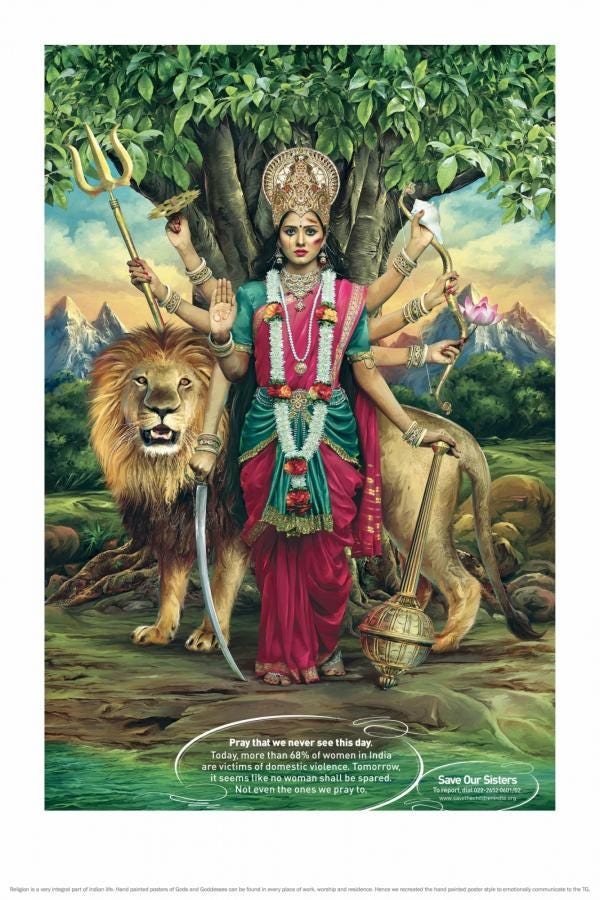#53 16.04.2023
Welcome to another edition of Performonks.
We are maniacal about our 330 million Gods and Goddesses. They keep an entire nation occupied with a busy calendar of rituals, fasts, and pujas – and have sprouted a $40Bn religion, and spirituality industry.
This has spawned four idolatry-based national pastimes – every Indian is obsessive-compulsive about raising heroes or heroines (parenting) or worshipping them (Bollywood, Cricket, and Politics).
It’s not a surprise that we have a thriving celebrity endorsement industry:-
- 50% of all endorsements in India feature celebrities, compared to 20% in the U.S. We are second only to Japan, where 90% feature celebrities.
- The value of the top 25 Indian celebrities in 2022 was $1.6 billion, +29.1% from 2021.

And as if SRK, Amitabh Bachchan, Dhoni, and Virat were not enough, influencers like Avinash Mada, Harsha Sai, Zakir Khan, Bhuvan Bham, and Kusha Kapila stream their content into our phones 24/7. The influencer industry was $110 million in 2021 and is estimated to grow to $268 million in 2025.
Today, we cover:-
- The complex idolatry landscape in India and the continuum from Gods to Influencers
- The different roles our idols play in our lives and the psychological distance between them and us
- Therefore, implications for brands
Idols are mimetic desire generators – we want to be better. Just like our idols

We all are slaves to mimetic desire – so we want what other people have.
Even more, we want to be like our idols. Therefore, all four of our hero types – God, Demi-God, Celebrity and Influencer – make us want to be better versions of ourselves. But in very different ways.
God: we want salvation from the cycle of life and death. We are told that the route to salvation is to incorporate God-like values into our life.
The irony is that it is incredibly difficult to live like God. That’s why God will always be out of reach. Because the second our Gods are within reach, they cease to be Gods.
Brand campaigns nowadays do not feature Gods and Goddesses, because doing so is guaranteed to invite criticism (or worse).
Although I did find that one of the earliest (1929) celebrity endorsements for Pears’ soap ‘borrowed’ Goddess Lakshmi’s virtues – purity, and youthfulness in this ad.

Save our sisters: The NGO “Save Our Children” launched this campaign in 2013. It is based on the very painful but real insight that on the one hand we worship women as Goddesses, and on the other, we subject them to domestic abuse. The campaign depicts women dressed up as the three main Goddesses – Lakshmi, Saraswati and Durga in the style of Raja Ravi Verma – but with visible injuries, and teary eyed.

Swachch Bharat (Clean India) Campaign: This campaign teaches Indians to not litter by playing up the belief that Goddess Lakshmi (Goddess of Wealth) disappears from places that are littered and dirty.
Demi-God: There is a special place for people who possess the triad of super human talent, deliberate practice and luck. We worship them as if they were God. In my opinion, Sachin Tendulkar, Rajnikanth, Amitabh Bachchan and M.S.Dhoni are the only four Demi-Gods we have at present.
While we want to be them, we know we are not super human enough to get there. They make us feel awe and priviledged just to have witnessed their life. Demi-Gods influence nation-wide movements and stand for values, not just empty consumption. For instance, let’s look at Gandhi and Tagore.
Sulekha Ink: The Swadeshi Movement was at its peak between 1930-34. Mahatma Gandhi was asking Indians to boycott foreign goods. Mahatma realized that since there was no local inks industry, writing a manifesto banning foreign goods using foreign ink would be hilariously ironic. So he requested Satish Chandra Dasgupta to start manufacturing Indian Ink. Sulekha Ink was born. Rabindranath Tagore, Satyajit Ray, Morarji Desai, all endorsed and wrote with Sulekha Ink – the symbol of Make in India.

Godrej Soap: Even before Sulekha, India’s first ever ‘celebrity endorsement’ was Tagore’s ad for Godrej Soap. Until then, soap was made with animal lard and tallow – this hurt the sensibilities of vegetarian Hindus. So in 1919, as part of the Swadeshi movement, Ardeshir Godrej made the world’s first pure-vegetarian soap from vegetable oil extracts. Tagore agreed to model for it because it was more than a soap-it was a symbol of the Swadeshi movement.

Celebrity and Influencer: The size of the screen and the size of talent separates Celebrities from Influencers.
Celebrities start on the big screen (Like Deepika Padukone in Movies), or have larger-than-life talent (Beauty like Aishwarya, Sports like Virat Kohli and Neeraj Chopra), or are great entertainers (Comedians like Kapil Sharma). Celebrities 1) entertain us or 2) inspire us to develop our skills or 3) look attractive.
Influencers are like celebrities, but smaller – smaller screen, smaller audience size, and relatively smaller perceived talent.
The psychological distance we feel differentiates celebrities from influencers.
We want to feel psychologically close to our idols
Because it takes time to be like our idols, we feel closer to them by consuming every piece of content about them. Or by keeping an eye on what they wear, eat, drink and drive.
Over time, we develop an emotional relationship with our idols. Sociologists call this a “parasocial relationship”. An example of such relationships is when boys in college imagine one particular girl to be their girlfriend, while said girl is blissfully unaware of their existence!

A parasocial relationship is a bit like when boys in college imagine one particular girl to be their girlfriend, while said girl is blissfully unaware of their existence.
These relationships are one-sided and are not reciprocated, therefore, the distance between us and our idols grows as we move from Influencer to God along the continuum.
On the left-hand side of the continuum, psychological distance reduces. Sociologists call this Trans-Parasocial relationships. Influencers are more accessible because they are on social media. They respond to our comments, hold live chats with us, and even incorporate our suggestions into their work.

That’s why, the greater the psychological distance between us and our idol, the more we look up to them and the greater our appetite for large, belief-changing statements from them.
And this analysis leads us to some high-level implications for brands.
Implications for Brands

- God: Best to avoid religion and Gods/Goddesses. If we must feature them, then design a campaign that’s rooted in the deep mythology surrounding our Gods and uses that to make large, cultural statements. Even so, it is safest if a non-commercial organization – like an NGO or the Government uses God endorsers.
- Demi-God: A Demi-God + Brand partnership comes with an almost 100% guarantee that the Demi-God will improve memory, meaning, and sales for a brand. The Demi-God has earned deep cultural meanings through their talent – this meaning gets transferred to the brand through association. The only watch-out is that the Demi-God and brand should be a match when it comes to values and stature, else the Brand will get overlooked and the partnership will be reduced to “that ad with Rajnikanth in it….”.
- One of the best examples of this continues to be Cadbury’s+ Amitabh Bachchan’s partnership to rebuild trust after the ‘worm controvery’.
- The brand and Demi-God need to hold themselves to the highest bar of quality. The brand should use the partnership to change its trajectory and make some bold cultural assertions. At the same time, the Demi-God needs to be precious about the causes and brands they lend their voice to.
- For instance, I was happy to hear that Amitabh Bachchan terminated his contract with Kamala Pasand Pan Masala because it’s a surrogate advertisement for Tobacco.
- Celebrity: This is the most active space in the market. As long as there is congruence between the celebrity and the product, the partnership can be attractiveness- based, expertise-based, or image-based. Some of my favorite campaigns in this space are:
- Pepsi: “Change the Game”, was designed to be highly congruent with the Indian cricket team. Winning the Cricket World Cup is a do-or-die event. And brand Pepsi mirrors the spirit of youth. The distinctive creative captured this emotion and generated a net gain for Pepsi. Link, Link
- Levis: Deepika Padukone’s glamor and fitness is congruent with brand positioning as a new-age fashion conscious choice. Link
- Make My Trip: cast Alia and Ranveer in a series of entertaining ads that showcase its features and benefits. Link. Link.
- A mismatch between the brand story and the celebrity can cause more harm than good. For example, the Zomato campaign with Hrithik and Katrina faced criticism as they came across as patronizing. It was also not believable that they answer the door themselves or offer cake to a Zomato delivery person. Zomato had to issue an apology and withdrew the ad. Link. Link. Link.
- New business models: Celebrities are turning investors. They invest in startups, co-create products and star in their campaigns. Shilpa Shetty with Mama Earth or Deepika Padukone with Epigamia (Ghee based peanut butter) are good examples. Link. Link.
- Influencers: influencers create within-reach desire. Influencer marketing grows consideration and trials for a new product at a lower budget vs a big celebrity endorsement. Becuse our psychological distance from the influencer is lesser, we find it easier to buy-into the everyday makeup, supplements, and recipes that influencers tell us about. The trick though is to have quantity – when many influencers repeat the same message, credibility increases. The Dalgona Coffee, and The Baked Feta Pasta are good examples of new behaviors that went global during covid lockdown. I recently came across this campaign by American Express. They signed up influencers across beauty, travel, cooking, technology etc., and asked them to share how they use American Express as they buy stuff for their passions. I found the idea simple, easy to execute, and congruent with the brand – three timeless rules that make hero-brand partnerships work well.
That’s all for today. Thank you for reading! What are your favorite celebrity-endorsed campaigns?
Resources:
- Top Celebrities by Value in 2023
- Size of Influencer market in India
- Religion and spirituality market in India
- Parasocial and Trans-Parasocial relationships
- The story of Sulekha Ink
- Tagore and Godrej Soap
- Save our sisters campaign
